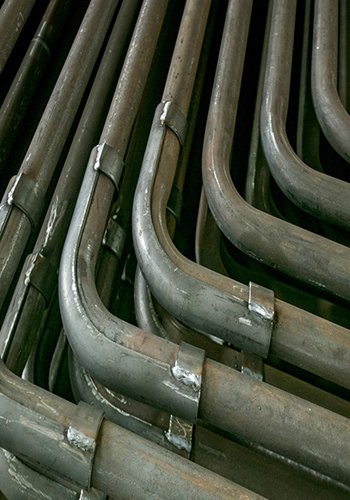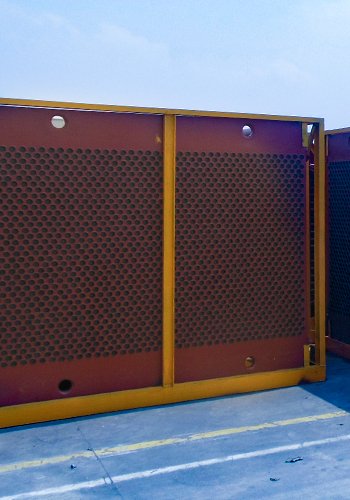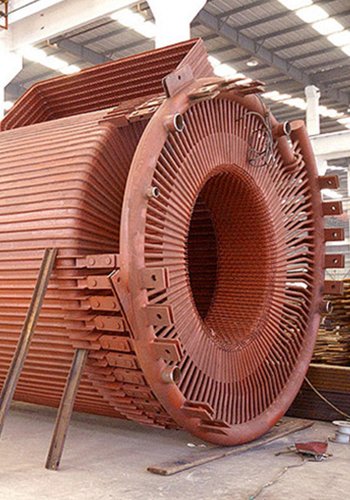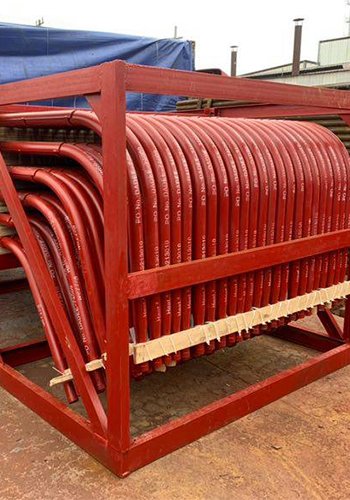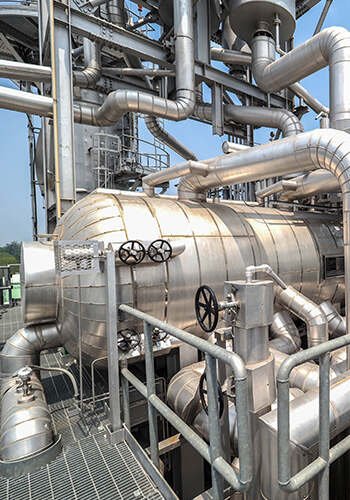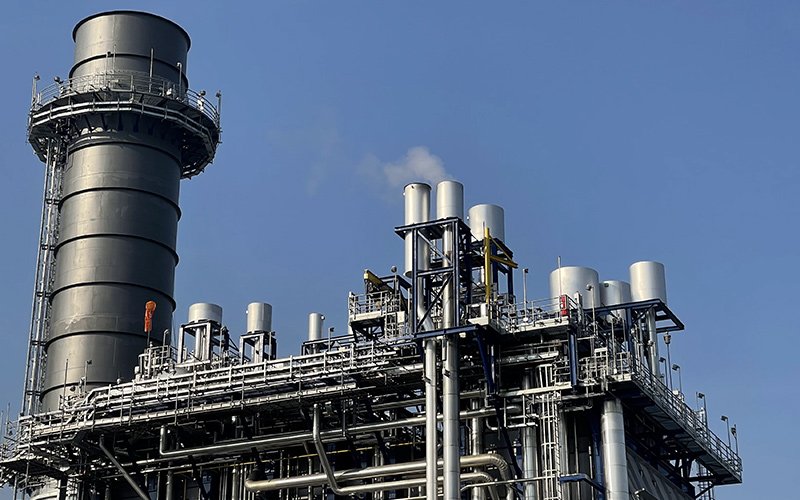Welcome, fellow boiler enthusiasts!
If you’re on a quest to maximize your boiler’s efficiency and reduce energy costs, you’ve come to the right place. This comprehensive guide will unravel the secrets behind choosing the perfect boiler air preheater. With its ability to significantly enhance performance and fuel savings, the correct air preheater can be the key to unlocking your boiler’s full potential.
Throughout this guide, we will cover a wide range of essential topics that will empower you to make an informed decision when selecting the ideal boiler air preheater. From understanding the crucial role of air preheaters in optimizing boiler efficiency to exploring different types and designs, we leave no stone unturned. So, let’s dive right in and equip ourselves with the knowledge necessary to make a well-informed choice.
Here’s a glimpse of what we’ll be covering:
The Importance of Boiler Air Preheaters: Understanding Their Role in Boiler Efficiency
The Importance of Boiler Air Preheaters: Understanding Their Role in Boiler Efficiency
To truly appreciate the significance of boiler air preheaters, we must first grasp their fundamental role in enhancing boiler efficiency. These remarkable devices are pivotal in recovering heat that would otherwise be wasted during combustion, leading to substantial energy savings and improved environmental sustainability.
Boiler air preheaters serve as a bridge between the boiler’s exhaust gases and the incoming combustion air. Utilizing the high-temperature flue gases expelled from the boiler, they preheat the combustion air before entering the furnace. This preheating reduces the fuel needed to achieve the desired temperature, resulting in remarkable energy savings and increased efficiency.
One of the key benefits of using boiler air preheaters is the reduction in fuel consumption. By harnessing the heat from the flue gases, the preheated air requires less additional energy to reach the desired temperature, thus reducing the fuel requirements. This translates into direct cost savings for the boiler operator while reducing greenhouse gas emissions and promoting a greener, more sustainable approach to heating.
Furthermore, boiler air preheaters contribute to improved combustion efficiency. The air-fuel mixture becomes more homogeneous by supplying preheated air to the combustion process, ensuring better combustion and reducing the formation of harmful byproducts such as carbon monoxide and unburned hydrocarbons. This not only enhances boiler performance but also helps to maintain cleaner and healthier air quality.
Using boiler air preheaters also allows for better control over the flue gas temperature. The preheaters help lower the flue gas temperature by extracting heat from the exhaust gases, reducing the heat lost through the chimney. This minimizes thermal energy wastage and increases the overall thermal efficiency of the boiler system.
In addition to their energy-saving benefits, boiler air preheaters also contribute to extended equipment life. Preheating the combustion air helps reduce thermal shock on the boiler components, such as the furnace walls and tubes. This results in reduced wear and tear, fewer maintenance issues, and increased longevity of the boiler system, saving both time and money in the long run.
Overall, understanding the importance of boiler air preheaters is crucial for optimizing their boiler’s performance and achieving significant energy savings. These devices enhance combustion efficiency and promote sustainability and cost-effectiveness by harnessing the heat from the flue gases. In the following sections of this guide, we will explore different types of boiler air preheaters, factors to consider when selecting one, and various maintenance tips to ensure optimal functioning. So, let’s continue on this journey toward choosing the perfect boiler air preheater and unlocking the full potential of our boilers.
Types of Boiler Air Preheaters: Pros and Cons of Different Designs
Types of Boiler Air Preheaters: Pros and Cons of Different Designs
Regarding boiler air preheaters, several types and designs are available, each with advantages and considerations. Understanding the different options will help you make an informed decision based on your requirements and boiler system characteristics. Let’s explore some of the most common boiler air preheaters and their pros and cons.
1. Plate-type Air Preheaters:
Plate-type air preheaters consist of closely spaced metal plates arranged in parallel. The exhaust gases flow on one side of the leaves while the combustion air passes through the other. One of the main advantages of plate-type air preheaters is their compact size, making them suitable for boilers with limited space. They also offer good heat transfer efficiency and are relatively easy to clean. However, they may be prone to fouling due to dust and particulate matter accumulation, which can impact their performance if not properly maintained.
2. Rotary Air Preheaters:
Rotary air preheaters employ a rotating wheel or rotor with heat transfer surfaces. The wheel alternately passes through the exhaust gas and combustion air streams, transferring heat from one to the other. This design offers high heat transfer efficiency and can handle high-temperature flue gases effectively. Rotary air preheaters are known for their robustness and can handle significant variations in gas flow rates. However, they may require more maintenance due to the moving parts and the potential for mechanical wear and tear.
3. Regenerative Air Preheaters:
Regenerative air preheaters use a rotating heat storage matrix to transfer heat between the exhaust gases and the incoming air. The matrix absorbs heat during one cycle phase and releases it during the other phase. This design allows for high heat transfer efficiency and is well-suited for applications with frequent load fluctuations. Regenerative air preheaters can achieve significant fuel savings and are known for their durability. However, they tend to be larger and more complex compared to other designs, requiring careful attention to maintenance and cleaning to prevent matrix fouling.
4. Tubular Air Preheaters:
Tubular air preheaters consist of tubes through which the combustion air passes while the flue gases flow around them. This design offers excellent heat transfer efficiency and is relatively easy to maintain and clean. Tubular air preheaters are versatile and can handle various gas flow rates and temperatures. However, they may be more corrosion-resistant due to moisture and acidic flue gases. Proper material selection and corrosion protection measures are essential for their long-term performance.
5. Run-around Coil Air Preheaters:
Run-around coil air preheaters involve two heat exchangers connected by a circulating fluid or refrigerant. The exhaust gases transfer heat to the liquid in one heat exchanger, and then the fluid transfers heat to the incoming air in the other heat exchanger. This design allows for customization and flexibility regarding installation and system integration. Run-around coil air preheaters are reliable and can handle varying load conditions. However, they may have slightly lower heat transfer efficiency than other designs, and the additional complexity of the fluid circulation system should be taken into account during maintenance and operation.
Each type of boiler air preheater has its advantages and considerations. When selecting the most suitable design for your boiler system, assessing your requirements, space limitations, heat transfer efficiency needs, and maintenance capabilities is essential. Consulting with an expert and considering the unique characteristics of your boiler will ensure that you choose the optimal type of air preheater that aligns with your energy efficiency and long-term performance goals.
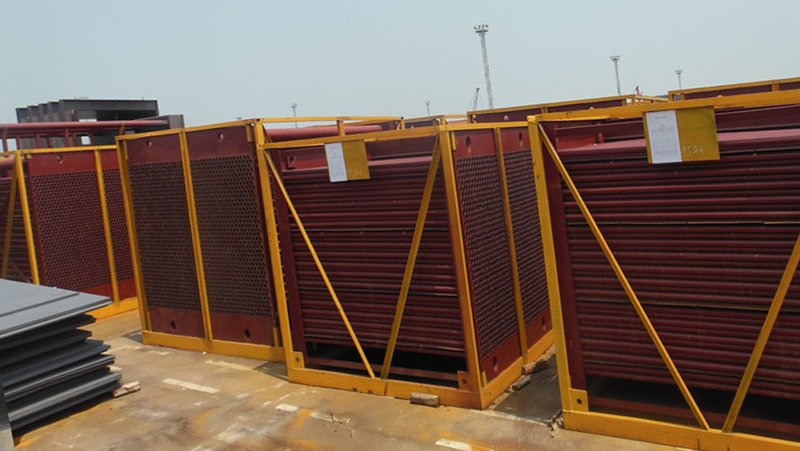
Factors to Consider When Selecting a Boiler Air Preheater: Size, Capacity, and Compatibility
Factors to Consider When Selecting a Boiler Air Preheater: Size, Capacity, and Compatibility
Selecting the right boiler air preheater is a critical decision that requires careful consideration of various factors. By understanding the fundamental considerations such as size, capacity, and compatibility, you can ensure a well-matched air preheater for your boiler system. Let’s explore these factors in more detail.
1. Size:
Size plays a crucial role in the selection of a boiler air preheater. It is essential to consider the available space within your boiler system for installing the preheater. Measure the dimensions and evaluate any limitations or restrictions that may impact the size of the air preheater. Ensure sufficient clearance for proper airflow and access for maintenance activities. Additionally, consider the airflow requirements of your boiler and choose an air preheater that can handle the required volume of combustion air.
2. Capacity:
The boiler air preheater’s capacity should align with your boiler system’s heat transfer requirements. Assessing the flue gases’ heat load and the combustion air’s desired temperature rise is essential. This information will help determine the required heat transfer surface area and the overall capacity of the air preheater. Oversized or undersized preheaters can lead to inefficiencies or inadequate performance, so it is crucial to ensure a proper match between the preheater capacity and the specific heating demands of your boiler.
3. Compatibility:
Compatibility between the boiler air preheater and the existing boiler system is another critical factor. Evaluate your boiler’s design and operating parameters, including the fuel type, combustion process, and operating temperature range. Ensure that the air preheater you select is compatible with these factors for optimal performance and reliability. Compatibility also extends to the construction material, as it should suit the flue gases’ temperature, pressure, and corrosive elements.
4. Heat Transfer Efficiency:
Efficiency is vital to any boiler system; the same applies to the air preheater. Consider the heat transfer efficiency of different air preheater designs and choose one that offers high efficiency. A higher-efficiency preheater can lead to more significant fuel savings and reduced operating costs. Look for features such as enhanced heat transfer surfaces, optimized flow patterns, and minimized pressure drops to maximize the efficiency of the preheater.
5. Maintenance Requirements:
Maintenance is an ongoing aspect of any boiler system, and the air preheater is no exception. Consider the maintenance requirements of different air preheater designs. Some designs may be easier to access and clean, while others require more extensive maintenance procedures. Evaluate the availability of maintenance resources and the expertise required for proper upkeep. Choosing an air preheater that aligns with your maintenance capabilities will ensure its longevity and sustained performance.
6. Cost and Return on Investment:
Finally, consider the cost of the boiler air preheater and evaluate the return on investment it offers. Compare the initial purchase cost with the potential energy savings and operational benefits it can provide over its lifespan. Look for reputable manufacturers and suppliers who offer quality products with a track record of performance and reliability. Consider the long-term cost-effectiveness of the air preheater and weigh it against the upfront investment.
By carefully considering these factors – size, capacity, compatibility, heat transfer efficiency, maintenance requirements, and cost – you can make an informed decision when selecting a boiler air preheater that meets the unique needs of your boiler system. Remember to consult with experts, evaluate multiple options, and prioritize the most critical factors to your specific requirements. This will ensure optimal performance, energy savings, and enhanced efficiency for your boiler system.
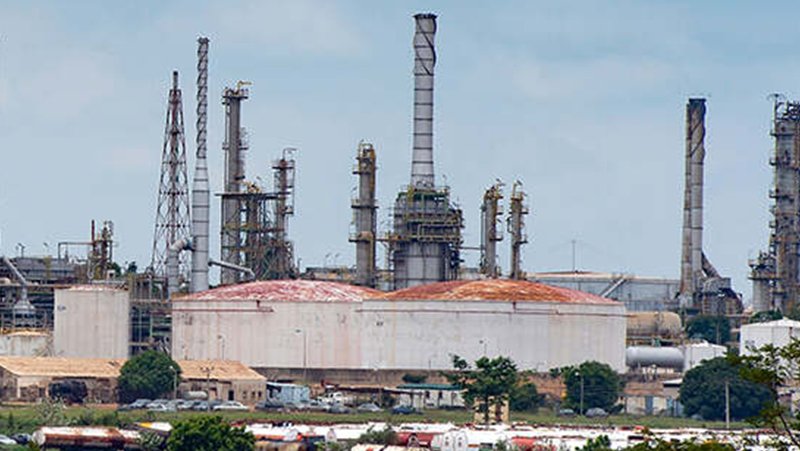
How to Calculate the Heat Transfer Efficiency of a Boiler Air Preheater
How to Calculate the Heat Transfer Efficiency of a Boiler Air Preheater
Calculating the heat transfer efficiency of a boiler air preheater is crucial in assessing its performance and determining its effectiveness in recovering heat from the flue gases. By understanding the calculation process, you can evaluate the efficiency of your air preheater and make informed decisions to optimize your boiler system. Let’s explore the steps involved in calculating heat transfer efficiency.
1. Determine the Heat Transferred:
The first step is to determine the amount of heat transferred from the flue gases to the combustion air by the air preheater. This can be calculated using the formula:
Q = m * Cp * (T2 – T1)
Where:
Q is the heat transferred (in kW or Btu/hr)
m is the mass flow rate of the combustion air (in kg/hr or lb/hr)
Cp is the specific heat capacity of the combustion air (in kJ/kg·°C or Btu/lb·°F)
T2 is the temperature of the combustion air leaving the air preheater (in °C or °F)
T1 is the temperature of the combustion air entering the air preheater (in °C or °F)
2. Determine the Heat Available:
Next, you must determine the heat in the flue gases that can be transferred to the combustion air. This can be calculated using the formula:
Qg = mg * Cpg * (Tg1 – Tg2)
Where:
Qg is the heat available in the flue gases (in kW or Btu/hr)
mg is the mass flow rate of the flue gases (in kg/hr or lb/hr)
Cpg is the specific heat capacity of the flue gases (in kJ/kg·°C or Btu/lb·°F)
Tg1 is the temperature of the flue gases entering the air preheater (in °C or °F)
Tg2 is the temperature of the flue gases leaving the air preheater (in °C or °F)
3. Calculate the Heat Transfer Efficiency:
Once you have determined the heat transferred (Q) and the heat available in the flue gases (Qg), you can calculate the heat transfer efficiency (η) using the formula:
η = (Q / Qg) * 100
The heat transfer efficiency is expressed as a percentage. It represents the proportion of heat transferred from the flue gases to the combustion air compared to the total available heat in the flue gases.
4. Interpretation and Analysis:
After calculating the heat transfer efficiency, it is important to interpret and analyze the results. A higher heat transfer efficiency indicates better performance and more effective heat recovery from the flue gases. It signifies a more efficient utilization of the available heat, resulting in more significant energy savings and improved boiler system efficiency. Conversely, a lower heat transfer efficiency suggests potential inefficiencies or limitations in the air preheater’s design or operation.
By regularly calculating the heat transfer efficiency of your boiler air preheater, you can monitor its performance over time and identify any deviations or issues that may arise. Establishing a baseline efficiency value and comparing subsequent calculations to this benchmark is recommended. Any significant decrease in efficiency may indicate fouling, blockage, or other operational problems that require attention and maintenance.
Calculating the heat transfer efficiency provides valuable insights into the performance of your air preheater, helping you optimize your boiler system’s energy efficiency and operational costs. Regular monitoring and analysis of efficiency data enable proactive maintenance and adjustments, ensuring the air preheater continues to operate at its peak performance and delivers the desired heat recovery benefits.
Installation and Maintenance Tips for Boiler Air Preheaters: Ensuring Longevity and Performance
Installation and Maintenance Tips for Boiler Air Preheaters: Ensuring Longevity and Performance
Installing and maintaining a boiler air preheater is essential for maximizing its longevity and ensuring optimal performance. By following proper installation and maintenance practices, you can enhance the efficiency of your preheater and prolong its service life. Let’s explore some essential tips for installing and maintaining your boiler air preheater.
Installation Tips:
1. Positioning and Clearances:
During installation, ensure the air preheater is positioned correctly in the flue gas and combustion airflow path. It should be installed to allow efficient heat transfer between the gases and the air. Consider the recommended clearances provided by the manufacturer to allow for proper airflow and accessibility for maintenance activities. Maintain sufficient space around the preheater for easy inspection, cleaning, and removal.
2. Ductwork and Connections:
Proper ductwork design and connections are crucial for efficient airflow and heat transfer. Ensure the ductwork is appropriately sized, sealed, and insulated to minimize heat losses. Pay attention to the alignment of ducts, flanges, and joints to prevent air leakage and optimize performance. Use suitable gaskets, seals, and insulation materials to maintain a tight and secure connection between the preheater and the ductwork.
3. Corrosion Protection:
Consider the corrosive nature of flue gases and implement suitable corrosion protection measures during installation. Select materials of construction that are resistant to corrosion and compatible with the flue gas composition. Apply protective coatings or linings where necessary, especially in areas prone to high temperatures or acidic conditions. Regularly inspect and maintain corrosion protection measures to prevent deterioration and ensure long-term durability.
Maintenance Tips:
1. Regular Inspection:
Perform regular inspections of the air preheater to identify any signs of fouling, blockage, or damage. Check for the accumulation of dust, soot, or other particulate matter on the heat transfer surfaces. Inspect for any leaks, cracks, or corrosion in the preheater components. Regular inspections help detect potential issues early on, allowing for timely maintenance and prevention of performance degradation.
2. Cleaning and Fouling Prevention:
Maintain a cleaning schedule to remove accumulated deposits on the air preheater surfaces. The frequency of cleaning will depend on factors such as fuel type, flue gas composition, and operating conditions. Use appropriate cleaning methods, such as mechanical cleaning, water washing, or chemical cleaning, as recommended by the manufacturer. Regular cleaning prevents fouling, maintains heat transfer efficiency, and prolongs the preheater’s lifespan.
3. Monitoring Performance:
Regularly monitor the performance of the air preheater to ensure it is operating within expected parameters. Measure and record essential variables such as flue gas and combustion air temperatures, pressure differentials, and air preheater outlet temperatures. Compare these measurements against design specifications or previous baseline data to identify deviations or performance anomalies. Promptly investigate and address any significant variations to maintain optimal efficiency.
4. Maintenance of Seals and Bearings:
Pay special attention to the maintenance of seals and bearings in rotary air preheaters—Lubricate bearings per the manufacturer’s recommendations to prevent excessive wear and ensure smooth operation. Regularly inspect seals for any signs of leakage and replace them if necessary. Proper maintenance of seals and bearings minimizes energy losses and ensures the efficient operation of the preheater.
5. Training and Expert Support:
Invest in training for maintenance personnel to ensure they have the necessary knowledge and skills to carry out maintenance activities effectively. Stay updated with industry standards, guidelines, and best practices for air preheater maintenance. If required, seek expert support from qualified technicians or service providers for complex maintenance tasks or troubleshooting.
By following these installation and maintenance tips, you can ensure the longevity and performance of your boiler air preheater:
6. Documentation and Record-Keeping:
Maintain a comprehensive record of all installation and maintenance activities. This documentation should include inspection reports, cleaning schedules, maintenance logs, and any repairs or replacements performed. Proper record-keeping allows you to track the history of maintenance activities, identify patterns, and make informed decisions regarding future maintenance and replacement needs.
7. Safety Considerations:
Prioritize safety during installation and maintenance procedures. Adhere to all safety protocols and guidelines, including proper handling of tools and equipment, wearing appropriate personal protective equipment (PPE), and following lockout/tagout procedures when necessary. Conduct regular safety audits to identify and mitigate potential hazards near the air preheater.
8. Performance Monitoring and Efficiency Improvement:
Continuously monitor the performance of your boiler air preheater to identify opportunities for efficiency improvement. Advanced monitoring technologies like temperature and pressure sensors are used to gather real-time data and identify deviations from expected performance. Analyze this data to optimize operational parameters, adjust cleaning schedules, or implement design modifications to enhance heat transfer efficiency and overall system performance.
9. Collaboration with OEMs and Experts:
Maintain a collaborative relationship with the air preheater’s original equipment manufacturer (OEM). Contact their technical support team for installation, maintenance, and troubleshooting guidance. OEMs often have valuable insights and resources to assist in maintaining the preheater’s performance and resolving any issues effectively. Additionally, consider engaging experts or consultants in boiler systems to provide periodic assessments and recommendations for optimizing your air preheater’s performance.
10. Continuous Improvement and Upgrades:
Stay abreast of advancements in air preheater technology and industry best practices. Periodically evaluate whether upgrades or modifications to your current air preheater are available that can improve its efficiency, performance, or maintenance requirements. Upgrading to more advanced designs, incorporating advanced control systems, or implementing innovative cleaning methods may yield substantial improvements in heat transfer efficiency and overall system performance.
By implementing these installation and maintenance tips, you can ensure your boiler air preheater’s longevity and optimal performance. A well-maintained air preheater will contribute to energy savings, improved boiler efficiency, and reduced environmental impact. Regular inspections, cleaning, and performance monitoring are essential to identify and address any issues promptly, ensuring the air preheater operates at peak efficiency and delivers the desired heat recovery benefits for your boiler system.
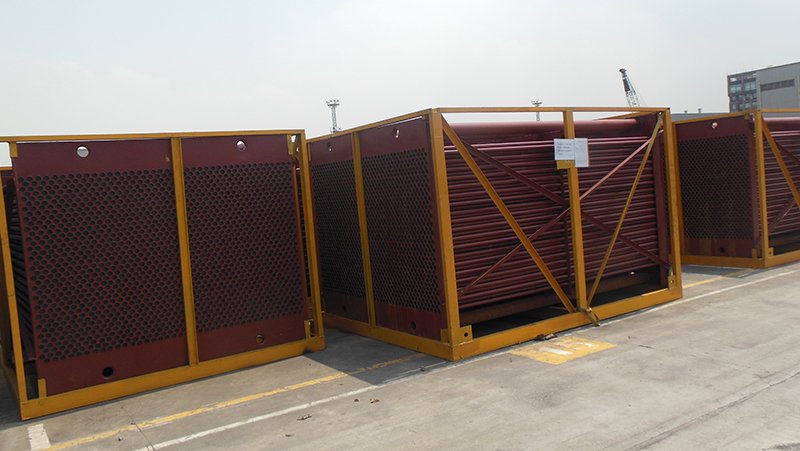
Common Problems and Troubleshooting Techniques for Boiler Air Preheaters
Common Problems and Troubleshooting Techniques for Boiler Air Preheaters
Boiler air preheaters play a crucial role in enhancing the efficiency of boiler systems by recovering heat from the flue gases. However, like any mechanical component, air preheaters can experience issues impacting their performance. Understanding common problems and troubleshooting techniques can help you identify and resolve issues promptly, ensuring the smooth operation of your air preheater. Let’s explore some of the common problems that may arise and effective troubleshooting techniques to address them.
1. Fouling and Deposits:
One of the most common issues in boiler air preheaters is the accumulation of fouling and deposits on the heat transfer surfaces. This can lead to reduced heat transfer efficiency and increased pressure drop. Regular cleaning is essential to remove these deposits. Mechanical cleaning methods, such as brushing or scraping, can remove loose deposits. In more severe cases, chemical cleaning or water washing may be necessary to dissolve and flush out stubborn deposits. Implementing a proactive cleaning schedule and monitoring the effectiveness of cleaning techniques can help mitigate fouling issues.
2. Air Leakage:
Air leakage in the air preheater can significantly impact its performance. It can lead to reduced heat transfer efficiency, increased energy consumption, and potential safety hazards. To address air leakage:
- Inspect the seals, gaskets, and connections for any signs of damage or wear.
- Replace faulty seals and ensure proper alignment and tightness of connections.
- Regularly monitor air preheater outlet temperatures and pressure differentials to identify any abnormal changes that may indicate air leakage.
Promptly addressing air leakage issues can restore the efficiency and effectiveness of the preheater.
3. Corrosion and Erosion:
Corrosion and erosion can occur in the air preheater due to the corrosive nature of flue gases and the high-velocity flow of combustion air. Inspect the preheater surfaces for signs of corrosion, such as rust or pitting. Implement appropriate corrosion protection measures, such as protective coatings, lining, or corrosion-resistant materials. Regular inspections and maintenance of corrosion protection measures are essential to prevent further deterioration and ensure the longevity of the air preheater.
4. Pressure Drop:
An unexpected increase in pressure drop across the air preheater can indicate a problem. It may be due to fouling, blockage, or improper airflow distribution. Clean the preheater surfaces to remove fouling and check for blockages in the ductwork. Ensure the air preheater is properly balanced with appropriate inlet and outlet damper settings to maintain uniform airflow. If the pressure drop remains high after cleaning and balancing, consult experts to investigate potential design or operational issues.
5. Mechanical Wear and Vibration:
Mechanical wear and vibration can affect the performance and reliability of the air preheater. Inspect the bearings, drive mechanisms, and rotating components for signs of wear, misalignment, or excessive vibration. Lubricate bearings per the manufacturer’s recommendations and adjust or replace worn-out parts as necessary. Regularly monitor vibrations using vibration analysis techniques and address abnormal vibration patterns to prevent further damage and ensure smooth operation.
6. Temperature Deviations:
Temperature deviations in the combustion air or flue gases can indicate performance issues in the air preheater. Monitor inlet and outlet temperatures and compare them to design specifications or baseline data. Significant deviations may indicate problems such as fouling, air leakage, or improper heat transfer. Conduct a thorough inspection and troubleshooting to identify the root cause and take appropriate corrective actions.
7. Lack of Maintenance:
One of the most common problems with air preheaters is the need for regular maintenance. Insufficient maintenance can lead to the accumulation of deposits, increased pressure drop, and reduced efficiency. Establish a comprehensive maintenance schedule that includes regular cleaning, inspection, and performance monitoring. Adhere to this schedule diligently to prevent issues and ensure the optimal functioning of your air preheater. Assign dedicated personnel or teams responsible for maintenance tasks, and provide them with the necessary training and resources to carry out their duties effectively.
8. Monitoring and Data Analysis:
Implement a robust monitoring and data analysis system to track the performance of the air preheater. Collect and analyze data such as inlet and outlet temperatures, pressure differentials, and pressure drop. Establish baseline values and set alarms or alerts for deviations beyond acceptable limits. By continuously monitoring the performance data, you can identify early signs of potential problems and take preventive measures before they escalate.
9. Expert Consultation:
In complex cases or persistent issues, it may be beneficial to seek expert consultation. Engage with experienced engineers, technicians, or service providers specializing in boiler systems and air preheaters. Their expertise can help diagnose and resolve challenging problems, provide recommendations for optimization, or suggest advanced troubleshooting techniques. Collaborating with experts can save time, prevent costly mistakes, and ensure the long-term performance of your air preheater.
10. Regular Training and Knowledge Sharing:
Invest in regular training programs for maintenance personnel to enhance their air preheater maintenance and troubleshooting knowledge and skills. Keep them updated with industry trends, best practices, and technological advancements. Encourage knowledge sharing among team members to foster a culture of continuous improvement and problem-solving. The more knowledgeable and skilled your maintenance team is, the better equipped they will be to identify and resolve issues efficiently.
By addressing these common problems and employing effective troubleshooting techniques, you can maintain the optimal performance of your boiler air preheater. Regular maintenance, proactive cleaning, prompt identification of issues, and collaboration with experts will contribute to your air preheater’s longevity, efficiency, and reliability. Remember that early intervention and preventive measures are key to minimizing downtime, maximizing energy savings, and ensuring the smooth operation of your boiler system.
Energy Savings with Boiler Air Preheaters: Estimating the Cost-Effectiveness
Energy Savings with Boiler Air Preheaters: Estimating the Cost-Effectiveness
Boiler air preheaters are essential for improving boiler efficiency and contribute to significant energy savings. By recovering heat from the flue gases, air preheaters reduce the fuel required to achieve the desired boiler output. Understanding the potential energy savings and estimating the cost-effectiveness of installing a boiler air preheater is crucial for making informed decisions. Let’s delve into the factors involved in estimating energy savings and determining the cost-effectiveness of these devices.
1. Heat Recovery Efficiency:
The heat recovery efficiency of a boiler air preheater plays a vital role in determining energy savings. It represents the percentage of heat recovered from the flue gases and transferred to the incoming combustion air. Higher heat recovery efficiency translates into greater energy savings. Modern air preheater designs can achieve heat recovery efficiencies ranging from 50% to 80% or even higher, depending on the specific technology. It’s important to consider the heat recovery efficiency when evaluating the potential energy savings of an air preheater.
2. Fuel Savings Calculation:
To estimate the energy savings a boiler air preheater achieves, you need to calculate the fuel savings resulting from the reduced heat demand. The fuel savings depend on factors such as heat recovery efficiency, boiler efficiency, fuel type, boiler load, and operating conditions. By comparing the boiler’s fuel consumption with and without an air preheater, you can determine the reduction in fuel consumption attributed to the preheater. Multiply the fuel savings by the fuel cost per unit to estimate the monetary savings achieved through energy efficiency.
3. Operational Considerations:
The actual energy savings achieved with a boiler air preheater may vary based on operational considerations. Factors such as the boiler load, operating hours, flue gas composition, and temperature variations can impact the performance and effectiveness of the air preheater. It’s important to consider the specific operating conditions of your boiler system when estimating energy savings. Real-world data and performance monitoring can provide valuable insights into the energy savings achieved with an air preheater.
4. Investment Costs:
Estimating the cost-effectiveness of a boiler air preheater involves comparing the upfront investment cost with the energy savings over the device’s lifespan. The investment cost includes the purchase price of the air preheater, installation expenses, and any associated infrastructure modifications. Consider the payback period, the time required for the energy savings to recoup the initial investment. A shorter payback period indicates a more cost-effective investment.
5. Maintenance and Lifecycle Costs:
In addition to the upfront investment cost, it’s important to consider the ongoing maintenance and lifecycle costs associated with the air preheater. Regular maintenance activities, such as cleaning, inspection, and repairs, contribute to the optimal performance and longevity of the preheater. Factor in routine maintenance costs and any potential major repairs or component replacements throughout the preheater’s lifespan. By considering the complete lifecycle costs, you can make a more accurate assessment of the cost-effectiveness of the air preheater.
6. Return on Investment (ROI):
Determining the return on investment (ROI) is a valuable metric for evaluating the cost-effectiveness of a boiler air preheater. The ROI compares the net financial benefit (energy savings minus operational and maintenance costs) with the initial investment. A positive ROI indicates that the energy savings over the preheater’s lifespan outweigh the costs, making it a financially viable investment. Evaluate the ROI over different time horizons to assess the long-term financial benefits of installing an air preheater.
7. Energy Efficiency Incentives:
When estimating the cost-effectiveness of a boiler air preheater, consider any available energy efficiency incentives or rebates provided by government agencies or utility companies. Many jurisdictions offer financial incentives to encourage the adoption of energy-efficient technologies. These incentives can help offset the upfront investment cost and improve the cost-effectiveness of installing a boiler air preheater. Research local energy efficiency programs and incentives to determine if you qualify for financial support.
8. Environmental Benefits:
While the primary focus of estimating the cost-effectiveness of a boiler air preheater is on energy savings and financial considerations, it’s also important to consider the environmental benefits. Air preheaters contribute to a greener and more sustainable operation by reducing fuel consumption and greenhouse gas emissions. Assessing the environmental impact and quantifying the avoided emissions can provide additional value and justification for investing in an air preheater.
9. Consultation with Experts:
Estimating a boiler air preheater’s energy savings and cost-effectiveness can be complex, especially considering the factors involved. It is beneficial to consult with experts or energy engineers who specialize in boiler systems and energy efficiency. They can provide accurate calculations, conduct energy audits, and offer insights specific to your boiler system and operational conditions. Their expertise can help you make well-informed decisions and optimize the cost-effectiveness of your investment.
In conclusion, estimating the energy savings and cost-effectiveness of a boiler air preheater involves considering factors such as heat recovery efficiency, fuel savings, operational considerations, investment costs, maintenance and lifecycle costs, ROI, and available energy efficiency incentives. By conducting a thorough analysis and considering all these aspects, you can determine whether installing a boiler air preheater is a financially viable and environmentally beneficial investment. Remember to gather accurate data, consult with experts, and consider your boiler system’s specific requirements and conditions to make an informed decision.

Comparing Different Materials for Boiler Air Preheater Construction: Which is Best?
Comparing Different Materials for Boiler Air Preheater Construction: Which is Best?
Several factors need to be considered when selecting the right material for constructing a boiler air preheater. The choice of material is crucial in determining the preheater’s performance, durability, and overall efficiency. Different materials offer varying advantages and disadvantages regarding corrosion resistance, heat transfer efficiency, cost, and maintenance requirements. Let’s explore some of the commonly used materials for boiler air preheater construction and compare their characteristics to determine which is best suited for your specific application.
1. Carbon Steel:
Carbon steel is a widely used material in boiler air preheater construction due to its affordability and ease of fabrication. It offers good strength and adequate corrosion resistance when adequately protected. However, carbon steel is susceptible to corrosion due to high-temperature flue gases and moisture. Carbon steel preheaters are often coated with protective layers such as paint or corrosion-resistant coatings to enhance corrosion resistance. Regular maintenance and inspections are necessary to ensure the longevity and performance of carbon steel preheaters.
2. Stainless Steel:
Stainless steel is popular for boiler air preheaters due to its excellent corrosion resistance properties. It is highly resistant to rust, oxidation, and various corrosive environments, making it suitable for applications where flue gases contain high moisture levels or corrosive compounds. Stainless steel preheaters are available in different grades, such as austenitic and ferritic stainless steels, each with specific properties and performance characteristics. While stainless steel is more expensive than carbon steel, its long-term durability and corrosion resistance can outweigh the initial investment.
3. Alloy Steel:
Alloy steels are often utilized for boiler air preheaters in high-temperature and high-pressure applications. These steels contain additional alloying elements such as chromium, molybdenum, and nickel, enhancing their mechanical strength, heat, and corrosion resistance. Alloy steel preheaters can withstand more extreme operating conditions, making them suitable for boilers with demanding requirements. However, the higher cost of alloy steels should be considered in the overall cost-effectiveness analysis.
4. Ceramic Materials:
Ceramic materials, such as silicon carbide and alumina, offer exceptional resistance to high temperatures, thermal shocks, and corrosion. They are well-suited for preheaters operating in severe conditions, where the flue gases may contain abrasive particles or high sulfur compounds. Ceramic preheaters provide excellent heat transfer efficiency and have a long service life. However, they are more expensive than metallic materials and may require specialized manufacturing techniques.
5. Composite Materials:
Composite materials, such as fiberglass reinforced plastics (FRP), are gaining popularity in boiler air preheater construction. These materials offer a combination of high strength, corrosion resistance, and lightweight properties. FRP preheaters are non-metallic, making them immune to corrosion and suitable for applications with aggressive flue gases or highly humid environments. Composite materials also offer design flexibility and ease of installation. However, their performance at very high temperatures may be limited compared to metallic or ceramic materials.
6. Titanium:
Titanium is a premium material known for its exceptional corrosion resistance, even in highly aggressive environments. It is particularly suitable for applications where the preheater is exposed to corrosive flue gases or harsh operating conditions. Titanium preheaters offer excellent heat transfer efficiency and have a long lifespan. However, titanium is expensive and requires specialized welding techniques, making it a less common choice except for specific applications that demand its unique properties.
When selecting the best material for your boiler air preheater, it’s essential to consider factors such as operating conditions, flue gas composition, maintenance requirements, and budget constraints.
Regulations and Standards for Boiler Air Preheaters: Meeting Compliance Requirements
Regulations and Standards for Boiler Air Preheaters: Meeting Compliance Requirements
Boiler air preheaters are critical in enhancing boiler efficiency and reducing environmental impact. Various regulations and standards have been established to govern the design, construction, installation, and maintenance of air preheaters to ensure boiler systems’ safe and effective operation. Compliance with these regulations is essential to meet safety, environmental, and performance requirements. Let’s explore some of the key regulations and standards relevant to boiler air preheaters.
1. ASME Boiler and Pressure Vessel Code: (Important!)
The ASME Boiler and Pressure Vessel Code sets the standard for the design, fabrication, and inspection of boilers and pressure vessels. It includes guidelines for air preheaters, covering aspects such as materials, welding, pressure ratings, and safety considerations. Compliance with the ASME code ensures that the air preheater meets industry-accepted quality, safety, and performance standards.
2. National Fire Protection Association (NFPA) Codes:
The NFPA codes, specifically NFPA 85 (Boiler and Combustion Systems Hazards Code) and NFPA 86 (Standard for Ovens and Furnaces), provide guidelines for the safe operation of boilers, combustion systems, and related equipment. These codes address fuel storage, burner management systems, interlocks, and safety devices. Adhering to the NFPA codes helps mitigate potential hazards associated with boiler operation and ensures compliance with safety regulations.
3. Environmental Regulations:
Boiler air preheaters must comply with environmental regulations to reduce air pollution and emissions. Depending on the jurisdiction, regulations like the Clean Air Act (in the United States), European Union Emission Standards, or local emissions control regulations may apply. These regulations often set limits on pollutants such as particulate matter, sulfur dioxide (SO2), nitrogen oxides (NOx), and carbon monoxide (CO). Air preheaters must be designed to minimize emissions and meet the prescribed emission limits.
4. Energy Efficiency Standards:
Energy efficiency standards and guidelines may exist at the national or regional level to promote energy conservation and reduce greenhouse gas emissions. These standards may include requirements for boiler efficiency, heat recovery systems, and overall system performance. Compliance with energy efficiency standards ensures that the air preheater meets the minimum efficiency requirements and contributes to energy savings.
5. Manufacturer Specifications:
Boiler air preheaters are typically supplied by manufacturers who provide specifications, installation guidelines, and maintenance recommendations. Following the manufacturer’s instructions and guidelines is crucial to ensure proper installation, operation, and air preheater maintenance. Deviating from these specifications may compromise performance, efficiency, and safety.
6. Inspection and Maintenance Requirements:
Regular inspection and maintenance of boiler air preheaters are essential to ensure compliance with regulations and standards. Inspections may include visual inspections, non-destructive testing, and performance assessments. Compliance with maintenance schedules and recommended practices helps identify and address issues promptly, ensuring the safe and efficient operation of the air preheater.
7. Local Codes and Authority Requirements:
It is important to consider any additional local codes, regulations, or requirements that may apply to your specific jurisdiction. Local authorities or regulatory bodies may have specific guidelines or permits to be followed to install and operate boiler air preheaters. Consulting with local authorities or industry experts can provide valuable insights into regional compliance requirements.
Complying with regulations and standards for boiler air preheaters is crucial to ensure safety, environmental responsibility, and efficient operation. Working with experienced engineers, consulting relevant codes and standards, and staying up-to-date with regulatory changes will help you meet compliance requirements and maintain the integrity of your boiler air preheater system.
Case Studies: Success Stories of Boiler Air Preheater Installations and Their Benefits
Case Studies: Success Stories of Boiler Air Preheater Installations and Their Benefits
Real-world examples and case studies of successful boiler air preheater installations provide valuable insights into the benefits and impact of this energy-saving technology. Let’s explore some case studies highlighting the positive outcomes of implementing boiler air preheaters.
Example 1: Manufacturing Facility
A manufacturing facility that relied heavily on boilers for its production processes installed boiler air preheaters. Before the installation, the facility faced high energy consumption and operating costs. However, after the installation of air preheaters, the facility experienced a significant improvement in boiler efficiency. The preheaters effectively captured waste heat from the flue gases and transferred it to the combustion air, reducing fuel consumption. As a result, the manufacturing facility achieved substantial energy savings and saw a noticeable decrease in its monthly energy bills. Implementing boiler air preheaters improved the facility’s bottom line and contributed to its commitment to sustainability by reducing carbon emissions.
Example 2: Power Plant
A power plant that operated several large boilers recognized the potential for energy savings through boiler air preheaters. By incorporating air preheaters into their boiler systems, they were able to recover a significant amount of waste heat from the flue gases. The preheated combustion air allowed for more efficient fuel combustion and increased boiler thermal efficiency. This resulted in substantial fuel savings for the power plant. The energy savings translate into reduced operating costs and improved overall plant profitability. Additionally, the reduced fuel consumption decreased greenhouse gas emissions, demonstrating the power plant’s commitment to environmental stewardship.
Example 3: Food Processing Plant
A food processing plant aimed to reduce energy costs while maintaining the high-quality standards of its production processes. They installed a boiler air preheater to recover waste heat and optimize combustion. The air preheater improved the boiler’s energy efficiency and enhanced process control and reliability. The plant witnessed significant energy savings, which translated into substantial cost reductions. The improved efficiency also allowed them to meet stringent environmental regulations and demonstrate their commitment to sustainable food production.
These case studies demonstrate the positive outcomes of installing boiler air preheaters in various industries and applications. Benefits such as reduced fuel consumption, energy savings, cost reductions, and environmental sustainability are consistently observed. The success stories are tangible evidence of the significant impact that boiler air preheaters can have on enhancing operational efficiency, reducing carbon footprints, and achieving long-term financial savings.
By analyzing and learning from these case studies, industries and organizations can gain valuable insights into the potential benefits and return on investment associated with installing boiler air preheaters. Each case study presents a unique scenario, showcasing the adaptability and effectiveness of air preheater technology across diverse applications.
Certainly! Here’s a table showcasing energy savings from boiler air preheaters in various industries:
| Industry | Energy Savings from Boiler Air Preheaters |
|---|---|
| Manufacturing | Up to 15% reduction in fuel consumption |
| Power Generation | Average savings of 5-10% in fuel costs |
| Hospitals | 10-20% reduction in energy consumption |
| Food Processing | Savings of 8-12% in energy expenditure |
| Chemical Plants | Up to 10% decrease in fuel usage |
| Textile Industry | 5-15% reduction in energy consumption |
| Paper and Pulp | Average savings of 7-12% in energy costs |
| Pharmaceutical | 10-20% decrease in energy consumption |
| Automotive | Savings of 5-8% in fuel consumption |
| Hotels and Resorts | Up to 12% reduction in energy expenditure |
Please note that the energy savings may vary depending on factors such as the size of the boiler system, operating conditions, insulation, and specific requirements of each industry. However, these figures provide a general indication of the potential energy savings that can be achieved by implementing boiler air preheaters across various sectors.
FAQ
Here are some commonly asked questions and their corresponding answers related to the topic of choosing the perfect boiler air preheater:
1. Q: What is a boiler air preheater, and what does it do?
A: A boiler air preheater is a device that recovers waste heat from the flue gases and uses it to preheat the combustion air before it enters the boiler. This improves the efficiency of the boiler system and reduces fuel consumption.
2. Q: Why is choosing the right boiler air preheater important?
A: Choosing the right boiler air preheater is crucial because it directly impacts the boiler system’s performance, efficiency, and overall cost-effectiveness. The right choice ensures optimal heat transfer, existing equipment compatibility, and industry standards compliance.
3. Q: What are the different boiler air preheaters available?
A: The main boiler air preheaters include tubular, plate, and rotary regenerative air preheaters. Each type has advantages and considerations regarding heat transfer efficiency, maintenance requirements, and space limitations.
4. Q: How do I determine the appropriate size and capacity for a boiler air preheater?
A: The size and capacity of a boiler air preheater depend on factors such as the boiler system’s heat load, flue gas flow rate, and desired temperature rise. Proper sizing requires consideration of these factors and consulting with experts or referring to industry guidelines.
5. Q: What materials are commonly used for constructing boiler air preheaters?
A: Common materials used for boiler air preheater construction include carbon steel, stainless steel, and various alloys. The choice of material depends on factors such as corrosion resistance, temperature, and budget considerations.
6. Q: How can I calculate the heat transfer efficiency of a boiler air preheater?
A: Heat transfer efficiency can be calculated by comparing the temperature difference between the flue gas and the preheated combustion air, along with the heat transfer area and the overall heat transfer coefficient.
7. Q: Key installation and maintenance tips for boiler air preheaters?
A: Proper installation ensures proper alignment, sealing, and insulation to minimize heat loss. Maintenance tips include regular cleaning, an inspection of tubes or plates, and monitoring of pressure differentials and gas flow rates.
8. Q: What common problems can occur with boiler air preheaters?
A: Common problems include fouling or clogging of heat transfer surfaces, air leakage, corrosion, and uneven gas distribution. Regular maintenance and monitoring can help identify and address these issues promptly.
9. Q: How can boiler air preheaters contribute to energy savings?
A: Boiler air preheaters improve the efficiency of the boiler system by recovering waste heat, which reduces the need for additional fuel consumption. This results in significant energy savings and cost reductions over the long term.
10. Q: What regulations and standards should be considered when choosing a boiler air preheater?
A: Important regulations and standards include the ASME Boiler and Pressure Vessel Code, local fire and safety codes, environmental regulations, and energy efficiency standards. Compliance with these regulations ensures safe and efficient operation while meeting legal and environmental requirements.
These questions and answers cover a range of important topics related to choosing and understanding boiler air preheaters, providing valuable information for readers seeking guidance in this area.
A bulleted list of 10 tips related to choosing the perfect boiler air preheater:
1. Assess your boiler system: Understand your boiler system’s requirements, heat load, and operating conditions to determine the specific needs for an air preheater.
2. Consider compatibility: Ensure the selected air preheater is compatible with your existing boiler system in size, capacity, and design.
3. Evaluate heat transfer efficiency: Look for high heat transfer efficiency air preheaters to maximize energy savings and reduce fuel consumption.
4. Choose the right type: Consider the different air preheaters available (tubular, plate, rotary regenerative) and select the one that best suits your requirements and space limitations.
5. Select appropriate materials: Choose materials for the air preheater construction that offer good heat transfer properties and resistance to corrosion and wear based on your specific operating conditions.
6. Prioritize maintenance: Opt for air preheaters with easy access for maintenance and cleaning to ensure optimal performance and longevity.
7. Seek expert advice: Consult with boiler air preheater experts or manufacturers for professional guidance and recommendations tailored to your needs.
8. Consider safety features: Consider air preheaters with safety features such as temperature and pressure sensors, automatic shutdown mechanisms, and proper insulation to ensure safe operation.
9. Evaluate cost-effectiveness: Assess the initial cost, energy savings potential, and expected return on investment of different air preheater options to make an informed decision.
10. Stay compliant: Ensure the chosen air preheater meets relevant industry regulations, standards, and codes, such as ASME Boiler and Pressure Vessel Code, local fire and safety codes, and environmental requirements.
These tips provide practical guidance for selecting the perfect boiler air preheater, taking into account factors such as compatibility, efficiency, maintenance, and compliance.
A boiler air preheater is an important boiler system component that is vital in enhancing efficiency and reducing fuel consumption. It is designed to recover waste heat from the flue gases generated during combustion and transfer it to the incoming combustion air, supplying preheated air to the boiler. This preheating process significantly improves the overall efficiency of the boiler system.
DHB boiler air preheater
The boiler air preheater is constructed using carbon steel or equivalent materials, which offers good structural strength and durability. The structure of the preheater is designed to be vertical, allowing for efficient heat transfer and space optimization within the boiler system.
The tubes used in the boiler air preheater can be either enameled seam or seamless tubes, depending on the specific requirements and preferences. These tubes are carefully selected and customized to meet the desired tube outer diameter (OD), ensuring efficient heat transfer and optimal performance.
The enamel coating on the tubes is an essential component of the boiler air preheater. It provides corrosion resistance and thermal insulation, ensuring long-lasting performance. The enamel thickness is typically specified at 0.34+/-0.06mm, which helps to maintain the integrity and effectiveness of the coating.
The size of the boiler air preheater is customized to fit the specific design and requirements of the boiler system it will be installed in. This customization ensures proper integration and compatibility, maximizing the efficiency and effectiveness of the preheater.
When manufacturing the boiler air preheater, a precise process is followed. It begins with the selection of high-quality materials, followed by ingot preparation. The material then undergoes hot or cold rolling and heat treatment processes like normalizing and tempering to enhance its mechanical properties. Inspection is conducted to ensure the material’s quality and adherence to specifications.
After inspection, the material is cut and shaped according to the required dimensions. Pipe piercing and welding processes are carried out to assemble the tubes into the desired configuration. A sealing test is conducted to verify the preheater’s integrity, ensuring no leaks or gaps. The preheater is then painted for corrosion protection and finished with proper packaging to ensure safe transportation and delivery to the customer.
A boiler air preheater is a specialized component constructed using materials like carbon steel or equivalent. Its vertical structure accommodates enameled seam or seamless tubes with customized outer diameter and enamel thickness. The size and design of the preheater are tailored to fit specific boiler systems. The manufacturing process involves careful material selection, shaping, welding, sealing, painting, and packaging, ensuring a high-quality and efficient product.
DHB boiler Certificate – Industrial Boilers Manufacturer (dhbboiler.com)
In conclusion, choosing the perfect boiler air preheater is a critical decision that can greatly impact your boiler system’s efficiency, performance, and cost-effectiveness. You can ensure optimal results by understanding the importance of boiler air preheaters, exploring different types, considering size and compatibility, calculating heat transfer efficiency, and prioritizing installation and maintenance. Remember to comply with regulations and standards, evaluate energy savings, compare materials, and draw inspiration from successful case studies. With the right boiler air preheater, you can unlock significant energy savings, reduce environmental impact, and improve the overall operation of your boiler system. So, take the next step, consult experts, and make an informed choice to propel your boiler system toward enhanced efficiency and long-term success. Invest wisely in a boiler air preheater and reap the benefits for years to come.
